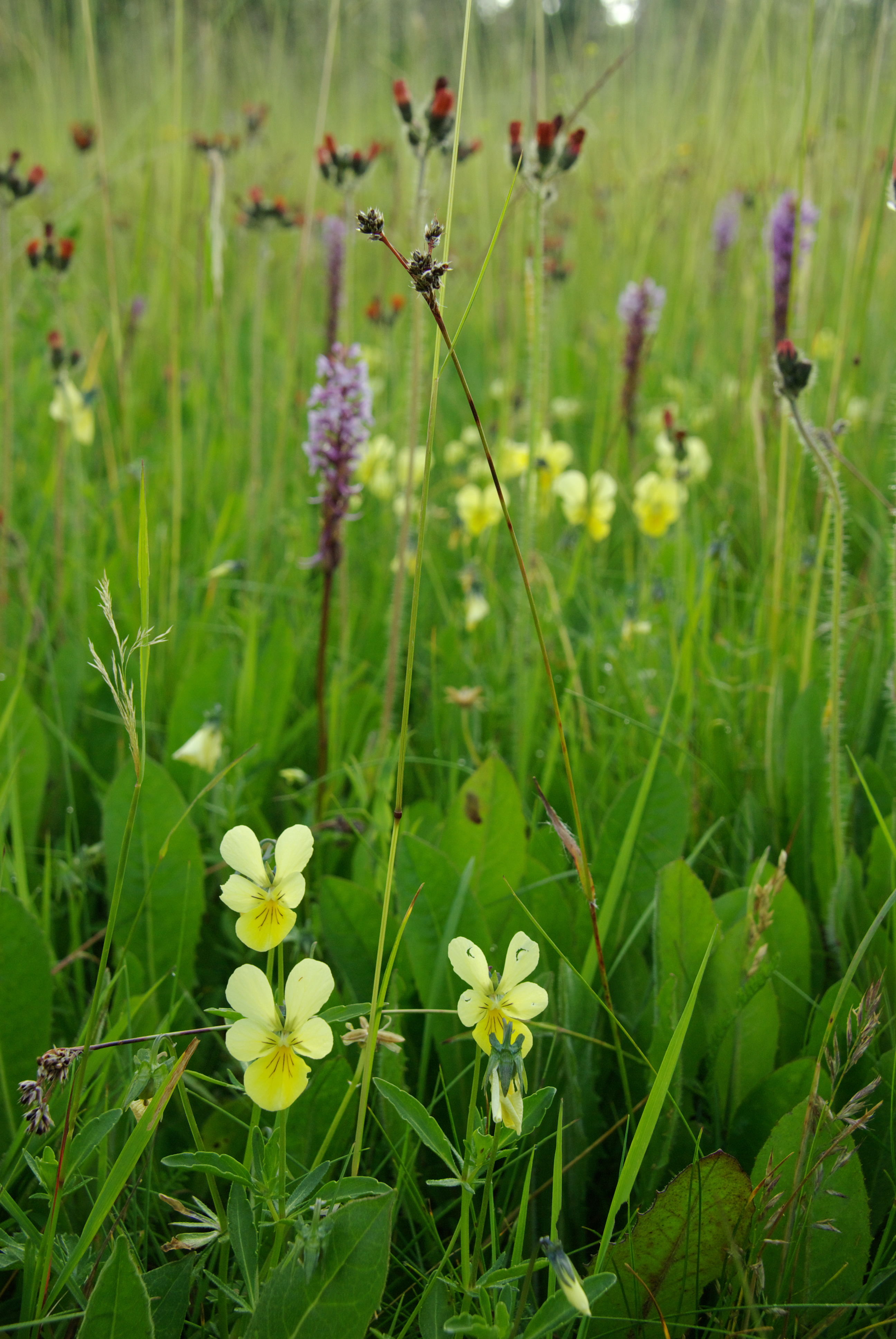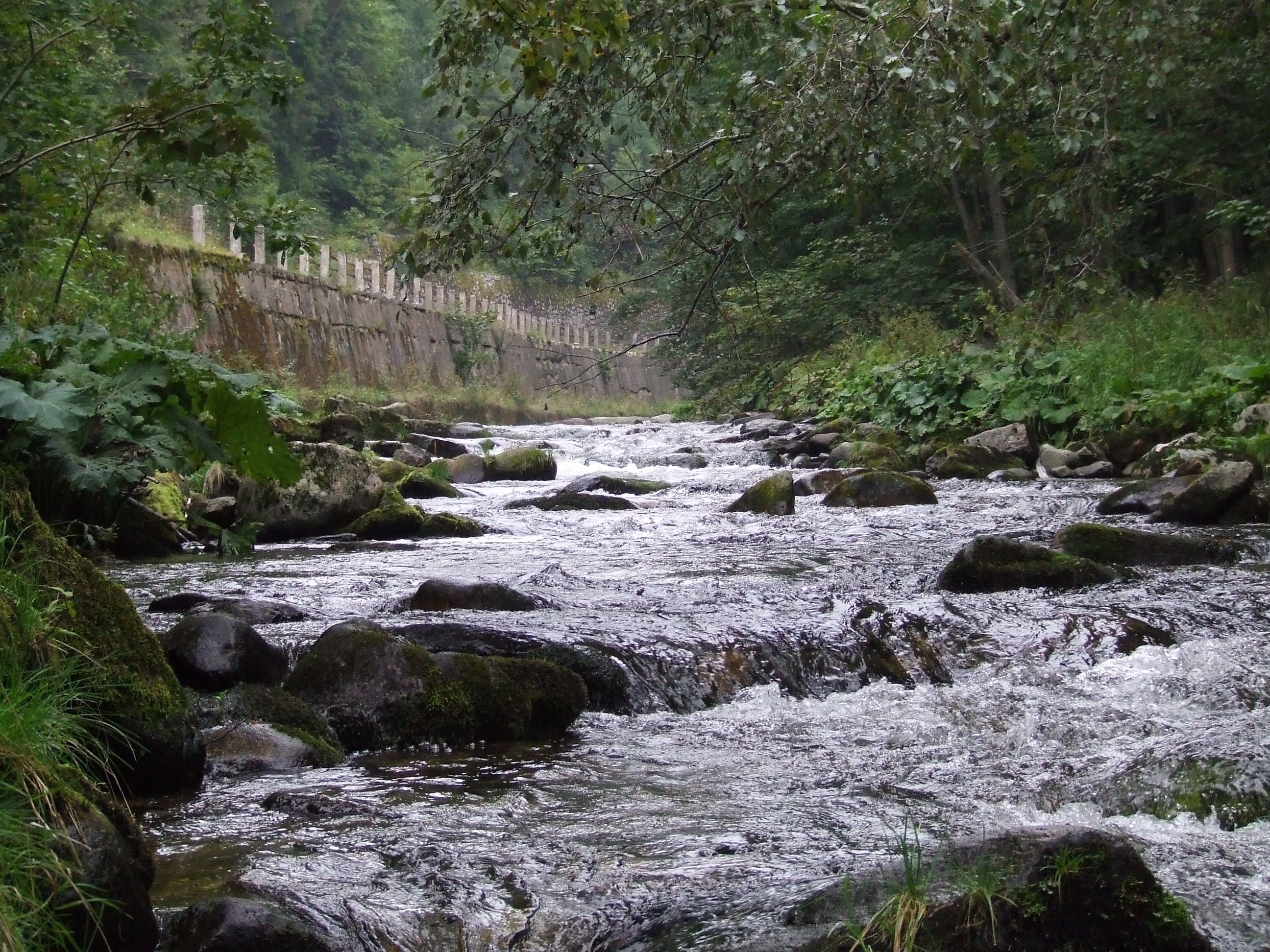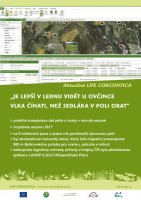About project
Life for the Krkonoše Mountains’ meadows? LIFE Corcontica!
If you like walking on the Krkonoše Mountains meadows, surely you have noticed that not all of them are covered by multi-coloured flowers. Why is that? Despite the current activities of local farmers, the meadows have been gradually degrading. Unlike the small herbaceous species, the current grassland management is suitable for the tussock-grass species as Holcus mollis or Calamagrostis villosa. These tussock-grass species realize their life strat egy, because they form a carpet impenetrable for other grassland species. Continuous expansion of these grass “carpets” brings a loss of quality forage important especially for small farmers and hunters. The botanists of
egy, because they form a carpet impenetrable for other grassland species. Continuous expansion of these grass “carpets” brings a loss of quality forage important especially for small farmers and hunters. The botanists of
the Krkonoše Mountains National Park Administration mapped the Krkonoše Mountains’ meadows and chose 29 of the most valuable mountain grassland enclaves, on which long-term care, such as mowing and raking, cutting pioneer trees and elimination of invasive plant species, will be focused. Within the project a five-member working team will be organised and also the local farmers will participate, especially through sheep, goat and cattle grazing. A pasture areal will be constructed in Sklenářovice for app. 200 sheep
to enable slow and more intensive grazing at local pastures, the places with the occurrence of valuable orchids such as Dactylorhiza sambucina, Dactylorhiza majalis, Orchis mascula or the pink blooming Gymnadenia conopsea.
Tenders for the construction of the pasture areal and for the necessary machinery and equipment (chain-saws, brush cutters, cameras and field computers with geoinformation systems, car and mountain tractor with agricultural adapters) are currently organized. This machinery and equipment will be used at several priority enclaves from spring 2012. At the same time detailed field surveys of the other priority enclaves of interest will be carried out. These field surveys (using the afore mentioned field computers) will contribute to the creation of Aplication database – the meadows management plan. Aplication database should be similar to the better known forest management plan (LHP). The plan will serve for recording natural conditions at individual sites, for recording of the realized farming activities and for planning of suitable and necessary interventions for the following years.
Farm plans will be prepared continuously. They will facilitate the farmers’ work and will help them with the sale of their products like hay pellets, sheep wool and cattle meat.
The grassland management is just one page of the LIFE Corcontica “book”. Other project activities will aim at the small water streams and the habitats of Cottus gobio (bullhead). Cottus gobio is a small fish living the cleanest streams, which is the reason why it is  referred to as a bioindicator species. It feeds on the larvae of caddis flies, mayflies, midges, blackflies, stoneflies and small crustaceans. Its populations in the Krkonoše Mountains streams are currently stagnant.
referred to as a bioindicator species. It feeds on the larvae of caddis flies, mayflies, midges, blackflies, stoneflies and small crustaceans. Its populations in the Krkonoše Mountains streams are currently stagnant.
We often hear from just a little older generations about how they used to wade in the streams, trying to catch bullheads in their hands – and
being successful. Today, when trying to catch an individual of this species, we are more likely to catch a disease due to standing in cold water for a long time, because there are not nearly as many of them as there used to be. Their loss is not caused by this harmless catching, but rather by technical and other changes to small water streams. There are several main culprits:
1. Water contamination changes the natural chemistry  of the bullhead’s environment.
of the bullhead’s environment.
2. Water extraction for making artificial snow on the
ski slopes substantially disturbs the regularity of the stream flows, which is a negative aspect for the bullhead.
3. Over the years the water streams have been fragmented into smaller sections, divided by high steps, which prevent the bullhead from moving upstream or downstream.
Within the project we will seek legislative and technical solutions to these problems. Therefore we plan to cooperate with water stream administrators, the Czech Fishing Union and other important organisations or individuals. After the implementation of our conservation measures, the population of bullheads is expected to increase by hundreds.
The second target species of the project is the tiny, violet-flowering Gentianella bohemica. It prospers on sparse, short-grass meadows and pastures. In the Krkonoše Mountains we can find it at two sites and even at these sites there are only several individuals. Our aim is to support the population of Gentianella bohemica so that they are capable of creating independent, self-replicating populations.
Gentianella bohemica. It prospers on sparse, short-grass meadows and pastures. In the Krkonoše Mountains we can find it at two sites and even at these sites there are only several individuals. Our aim is to support the population of Gentianella bohemica so that they are capable of creating independent, self-replicating populations.
All of the project activities contribute to the improvement of species diversity of the habitat types of community importance at the Natura 2000 site in the Krkonoše Mountains.
The LIFE Corcontica project, running from June 2012, is coordinated by the Krkonoše Mountains National Park Administration. The partners of the project are DAPHNE CZ – Institute of Applied Ecology and the Ministry of Environment. The project budget is € 3, 588, 576, covered by 75% by the LIFE+ Nature programme. You can meet the project in the Krkonoše Mountains during the next five years, but hopefully you will be able to see its results for much longer.
For more information please go to the project webpage life.krnap.cz.
Leaflets on the project will be available at the Krkonoše Mountains National Park Administration, municipal offices and from local action groups. Current information will constantly be provided the information panels at the individual meadow enclaves. We are looking forward to your interest in the treasures of the Krkonoše Mountains.






